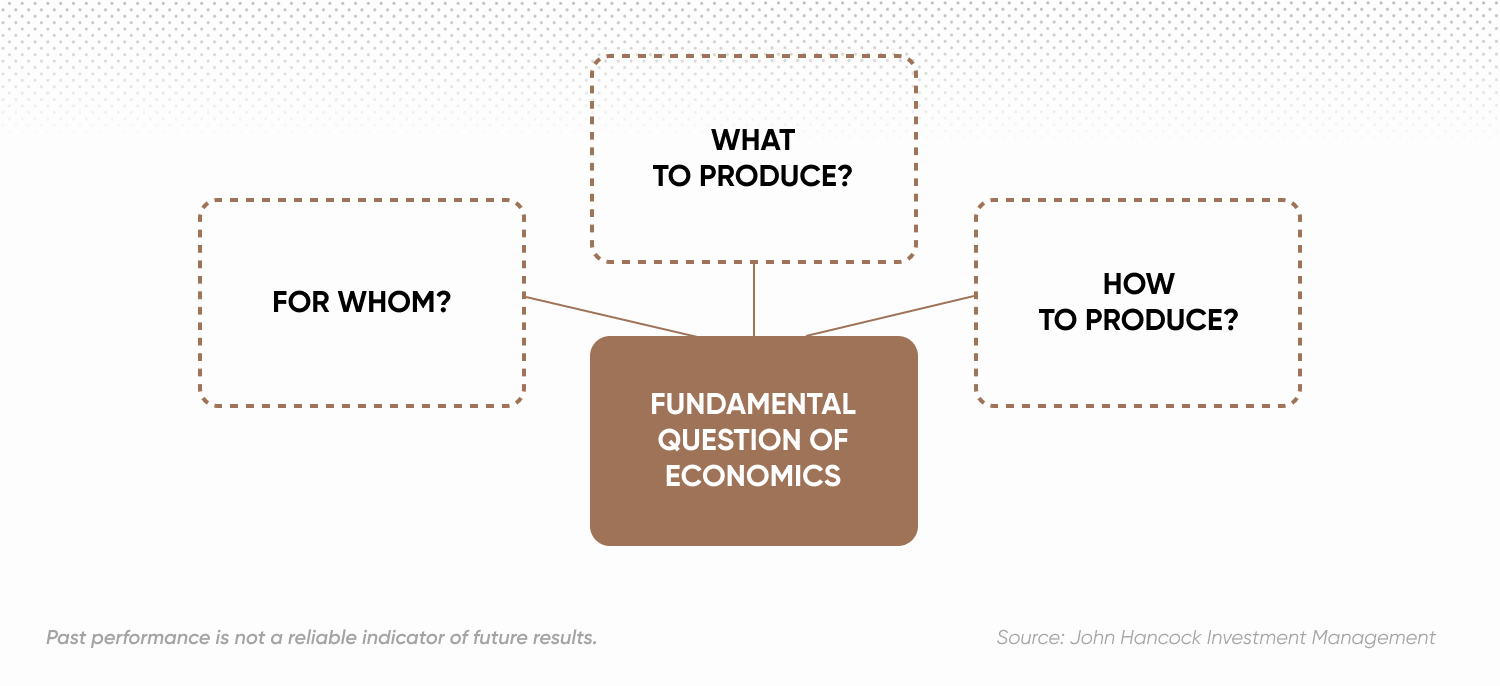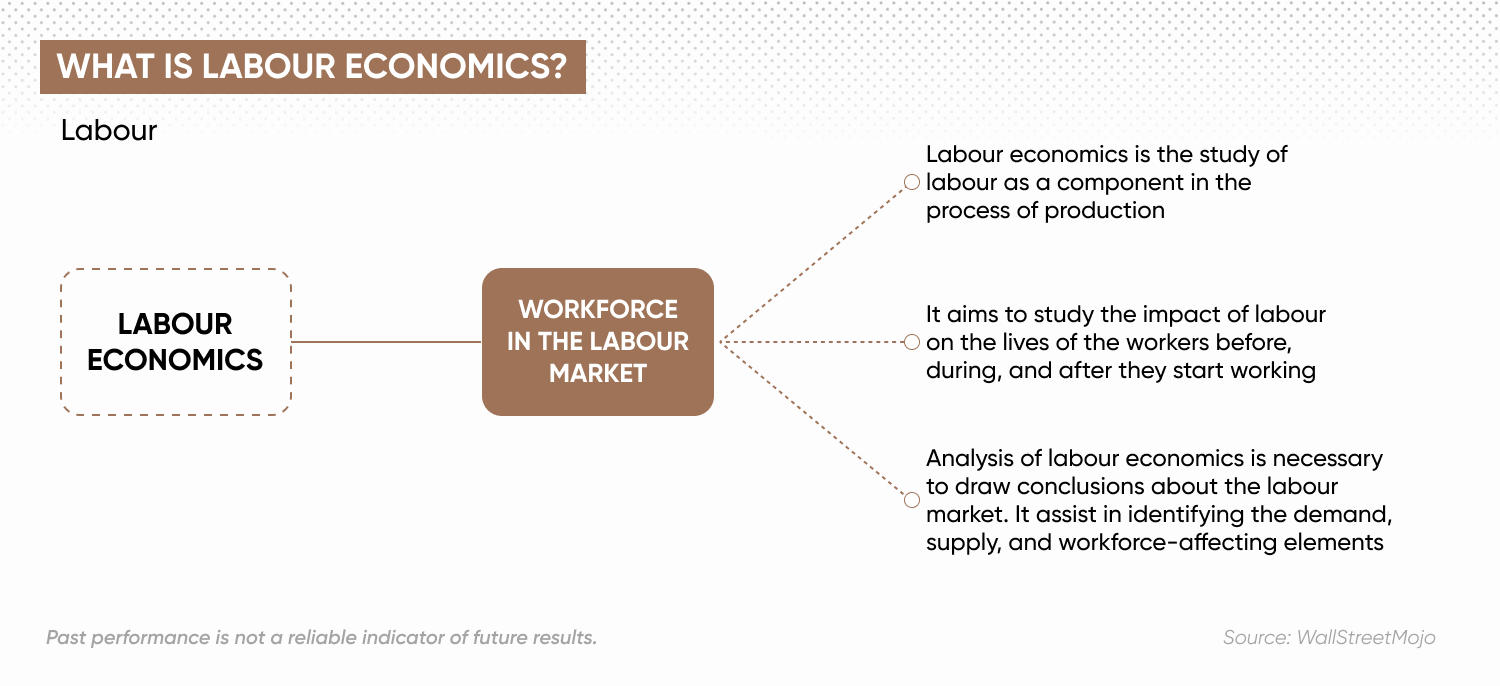What is economics?

Economics can be explained, simply, as the study of wealth. A slightly more complex description is that it is the study of how people and societies choose to allocate scarce resources.
Economics is usually cited in relation to government policy and the state of a particular country.
Key takeaways
-
Economics is the study of the production, consumption and transfer of wealth.
-
There are two main branches of economics: microeconomics and macroeconomics.
-
Key concepts of economics include gross domestic product (GDP), monetary policy and inflation.
Basics of economics
Economics is a famously argumentative subject. One joke has it that two economists will produce three opinions. But there are some shared assumptions in this field, such as that a price rise is likely to reduce demand for the goods or services in question, this is called supply and demand.
If the price of a resource increases, many will no longer find it affordable leading to a decrease in demand. With fewer people aquiring the resource, the supply will increase. Conversely, if the price drops demand will grow and the supply will decline.
Economists address a wide variety of questions. These can include how to design policies that will protect society’s most vulnerable while encouraging work, innovation, and all the activities that lead to economic and social advancement and wellbeing? What is the most cost-efficient way to reduce carbon emissions and pollutants? And how do individuals and families choose how much to save for the future?
There are two main branches of the discipline: microeconomics, which studies the individual firm and household, and macroeconomics, whose focus is on the national and international level.

Key concepts of economics
When it comes to measuring and defining economic activity, there are a few crucial concepts to be aware of:
-
Gross domestic product (GDP). Arguably one of the most important economic indicators. GDP measures the performance of economic activity over time and helps assess a country’s economic health.
-
Inflation. The increase of prices over time and, consequently, the decline in consumer’s purchasing power. Inflation is usually measured as a percentage.
-
Monetary policy. The policy or actions taken by a country’s central bank to promote economic growth and support economic goals laid out by the government.
-
Fiscal policy. Fiscal policy refers to changes made by governments in relation to a country’s finances, usually in an attempt to stabilise a nation’s economy.
-
International trade. The exchange of goods, services and capital across international borders or territories.
Application of economics
Microeconomics vs macroeconomics
Microeconomics studies the implications of individual human action in economics. This could include how they react to inflation or deflation, and the kinds of goods and services they value. Examples of common questions in microeconomics questions include: Should I pay cash, borrow or sign a lease to buy a new car? Should I take out a mortgage loan or save while renting to buy a house?
Macroeconomics studies how the economy behaves on a national and international scale. This includes fiscal and monetary policy, inflation, rate of growth, GDP and changes in employment rates. Examples of macroeconomic questions could be: Why are so many people unemployed? Who determines how much money is circulating in the US?”
Labour economics
Labour economics studies the labour force as an integral part of the production. The labour force is made up of everyone who works for profit and those who are unemployed but looking for employment.

Environmental economics
Environmental and natural resource economics is the application of the principles of economics to the study of how environmental and natural resources are developed and managed. It uses economic analyses to improve environmental policies.
Environmental economics also measures the economic consequences of environmental outcomes.
Behavioural economics
Behavioural economics is the study of the effects of psychological, mental, emotional, cultural and social factors on the financial decisions of individuals and institutions.
One of the key aims of behavioural economics is to understand why many often make irrational economic decisions. Retail companies can also use information from behavioural economics to decide the price of their goods, create advertisements and package their products.
Conclusion
Economics is the study of the allocation of scarce resources, including how markets function and how incentives affect people’s, businesses’ and institutions’ behaviour. Subsets of economics such as macroeconomics, microeconomics and behavioural economics can help us understand how this study is applicable to the day-to-day function of individuals and institutions.
FAQs
What is economics and why is it important?
Economics is the study of how scarce resources are allocated in society, and encompasses everything from how individuals make financial decisions regarding their households to how governments make fiscal policies.
What is the difference between microeconomics and macroeconomics?
Microeconomics studies the individual firm and household, macroeconomics focuses on the national and international level.
How does international trade affect the economy?
International trade allows countries to participate in the global economy, potentially leading to opportunities for foreign investment allowing said companies economies to grow.